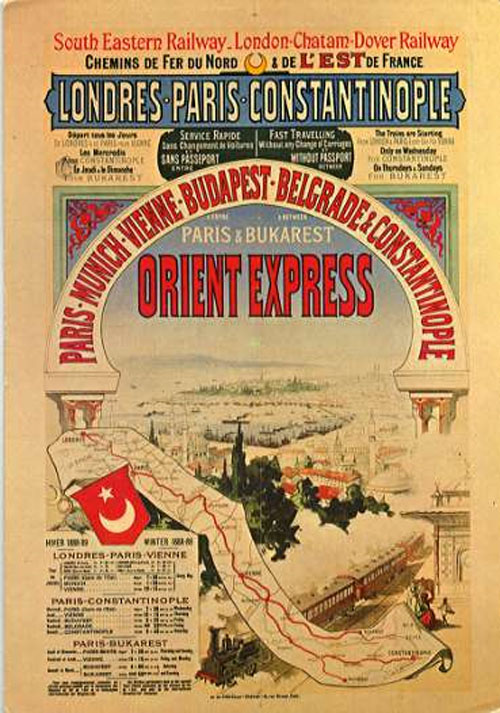It's Murder On The Orient Express
Historian article

It was the most luxurious long distance rail journey in the history of travel. Royalty, aristocracy, the rich and the famous travelled regularly on the Orient Express. Gourmet chefs prepared exquisite meals, chandeliers, luxury compartments, staterooms and dining rooms on a par with famous hotels like the Ritz were all part of the experience. It has been the setting for novels and films, perhaps the most famous being Agatha Christie's Murder on the Orient Express. But why has it captured our imagination so much, and does it deserve its iconic status?
The original Orient Express first ran in 1883, from Paris to Varna in Bulgaria from where passengers had to complete their journey by sea. In 1889 the first non-stop journey from Paris to Constantinople took place. This was no ordinary international railway service. British passengers could catch the Boat Train from London Victoria station, travel to Dover, cross the North Sea by ferry, and pick up their sleeping car in Calais. From there it was a short trip to Paris, where the carriage would be added to the Orient Express, final destination Constantinople, crossing the continent of Europe without changing trains. Just outside the Sirkeci Terminal in Constantinople was the Pera Palas Hotel, recently opened and able to accommodate travellers from the train, and still a five-star hotel today. A short hop from the station across the Bosporus brought you to HaydarpaÅŸa Terminal, where the Asian lines of the Ottoman Empire began. In its heyday in the 1930s, the Orient Express ran daily from Paris to Istanbul, a journey of over 3,000 kms, taking three nights. There were even two other routes in operation too - the Simplon Orient Express via the new Simplon tunnel in Switzerland, opened in 1919; or the Arlberg Orient Express, via Zurich...
This resource is FREE for Historian HA Members.
Non HA Members can get instant access for £2.75

